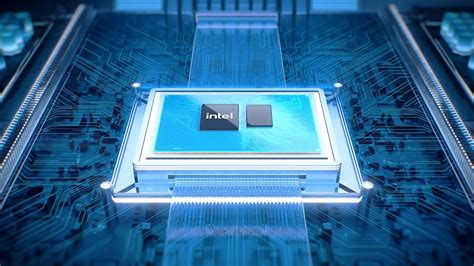The release of Intel’s *Lunar Lake* architecture has stirred quite a buzz in the tech community, and for good reason. For a company synonymous with leading-edge semiconductor technology through most of its history, shifting to TSMC for manufacturing isn’t just a strategic adjustment; it’s a seismic shift. Historically, Intel has prided itself on its vertically integrated approach, from design to manufacturing, but this generation of chips signals a departure from tradition, conceding the manufacturing ground to TSMC’s superior nodes.
Why does this matter? Well, TSMC, known for pushing the envelope with smaller and more efficient nodes, brings a level of performance and efficiency that Intel’s internal foundries have struggled with in recent years. The decade-long debacle surrounding Intel’s 10nm process, which reportedly led to colossal setbacks and financial hits for the company, still lingers in the collective memory of the tech community. By leveraging TSMC’s prowess, Intel might regain its competitive edge in performance-per-watt against rivals like AMD and Apple, who have been nipping at its heels.
However, this move comes with a lot of pressure. One of the most compelling aspects of Lunar Lake is its ambition to integrate numerous advanced components including the *Lion Cove* cores, Xe2 graphics, and the *NPU4* neural processing units. The decision to go with 4P4E cores without simultaneous multi-threading (SMT) has spurred plenty of debate. On one hand, SMT has been traditionally known to boost performance in multi-threaded tasks by allowing each core to run two threads. On the other hand, some argue that eliminating SMT in favor of efficiency cores (E-cores) can lead to better power savings and less scheduler complexity. This is a nuanced balance that Intel needs to strike perfectly to justify its non-traditional approach.
In practical terms, workloads that are memory-bound or depend heavily on pointer chasing, such as interpreted languages like Python and JavaScript, often see significant benefits from SMT or hyper-threading. For instance, the ability to keep cores busy by switching tasks or threads while waiting for memory lookups is a performance enhancer. But, as dumbo-octopus pointed out, modern Just-In-Time compilers (JIT) and CPython optimizations reduce the extent of pointer chasing, chunking routine tasks into manageable bits that processors can handle more efficiently.
Indeed, there are cases and concerns among developers where SMT doesn’t play along nicely. For example, hardcore rendering tasks and select gaming workloads can suffer from SMT because of the context-switch overhead and contention for resources. Intel’s E-cores aim to address these niche demands by providing simpler pipeline structures while maintaining a sustainable power profile. This essentially marks Intel’s effort to design a more balanced ecosystem tailored to real-world usage scenarios, where efficiency sometimes trumps sheer processing power.
Another interesting element in Lunar Lake’s design is the adoption of *LPDDR5X memory* packaged directly on the chip. The configuration allows up to 32GB, ensuring high bandwidth and low latency memory access. While this mirrors some of Apple’s strategy with their M-series chips, it brings its own set of controversies. Integrated memory, while power efficient, restricts upgradability—a sore point for power users who require more extensive memory capabilities. As noted by AnthonyMouse, this is an intentional design choice that can be seen as consumer-unfriendly, locking buyers into fixed hardware configurations without flexibility.
Intel isn’t just betting on hardware alone; software optimizations, especially under the operating systems they target, play a crucial role. For instance, Lunar Lake’s efficiency gains are significantly bolstered by Windows 11’s new threaded scheduling, highlighting how symbiotic hardware-software interactions can drive performance. Linux, traditionally the backbone for many server workloads and developers, will undoubtedly need to catch up in schedulers’ sophistication to harness Lunar Lake’s full potential.
In the broader sense, Intel’s partnership with TSMC reveals an acknowledgment of the current semiconductor ecosystem’s dynamism—a giant leap acknowledging areas where they lagged. Intel is laying its chips, almost literally, on balancing power efficiency and performance while trusting TSMC’s foundries to provide the manufacturing excellence required. This move could herald a new golden age for Intel, or turn out to be a costly gamble if the overall ecosystem—hardware, software, and market reception—doesn’t align. Either way, with Lunar Lake, Intel has shown it’s willing to rewrite its rules, knowing that in the ever-evolving tech landscape, adaptability is king.


Leave a Reply